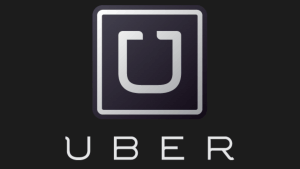Uber Valuation Timeline, History
Have you ever experienced getting stranded late at night, while it was raining, because you had no car and there was no cab in sight? This happens to a lot of people, and this was what inspired two young men to create an app that has now become synonymous with “better than taxi” transportation in different countries all over the world. This is the story of how Uber came to be and how it aggressively raised its physical and financial value over the years.
The Story Begins

Of course, the story begins with the founders Travis Kalanick and Garrett Camp.
Kalanick and StumbleUpon founder Camp were in Paris when they thought of creating an app that could allow them to simply tap a button and get the ride they need. That was in 2008, when Kalanick first heard of the idea at a LeWeb technology conference. Today, that app has become a game changer, not only in the transportation industry, but in the technology world as well. Uber has become the world’s partner for reliable rides. It services 377 cities in different parts of the world.
One of the things that make Uber stand out, aside from the unique and reliable service they offer, is the fact that it helps people and communities earn money. Uber car drivers earn an honest living, while also helping their community or city improve its economy and enjoy better transportation access.
The Founders
Garrett Camp was born in Alberta, Canada and received his education from the University of Calgary. He graduated with a degree in electrical engineering. StumbleUpon was born after he and three friends decided to create a search engine that would find content curated by its users.
Camp is Uber’s chairman. However, he also spends his time with Expa, a startup studio that helps new companies. Bloomberg BusinessWeek conferred him with the Tech’s Best Young Entrepreneur award in 2008.
As of February 9, 2016, Camp is number 4 in Forbes’ list of America’s Richest Entrepreneurs Under 40. His net worth is $6.2 billion.
Los Angeles native Travis Kalanick was in middle school when he first started to learn how to code. He studied at the University of California in Los Angeles (UCLA) but eventually dropped out to work in Scour, a file sharing company. Scour filed for bankruptcy after it was sued for a big amount. Kalanick then started looking for backers for his startup called Red Swoosh (Mark Cuban was an investor). When the company started to take off, he sold it for $19 million and he began concentrating on his role as an angel investor.
Kalanick acknowledges Camp as the one who thought of the idea for Uber. It actually started from complaints about the traffic in San Francisco. The idea escalated when they found themselves having a difficult time getting a cab in Paris.
The Uber co-founder made it to Forbes’ America’s Richest Entrepreneurs Under 40. As of February 9, 2016, he is ranked 4th with a net worth of $6.2 billion. Kalanick is Uber’s CEO.
Detractors and Rivals
Although it has gone through a lot of challenges, including rivals, Uber has remained on top of its game. From its black-car service days in 2009, it has become an all-around logistics company that many have come to rely on. Despite this, Kalanick and company often find themselves on their toes as detractors (i.e. regulators and taxi industry representatives) and rivals do not seem to get tired running after them and trying to break the company.
Things are still in their rightful places, though, as investors continue to trickle in and funding increases practically every year.
Funding and Investments
 Here is a summarized timeline of Uber’s funding and valuation.
Here is a summarized timeline of Uber’s funding and valuation.
2010
The ball started rolling for Uber in October 2010, during its angel-funding round. It was led by venture capital firm First Round Capital, Shawn Fanning (Napster co-founder), Founder Collective, and Lowercase Capital, among many other angel investors. The investment was worth $1.25 million.
2011
Another round of funding took place in February 2011. The Series A funding round was led by Benchmark Capital. Alfred Lin of Sequoia Capital also invested in that round.
Apart from gaining a board of director in the person of Benchmark’s Bill Gurley, this funding round gave Uber a valuation of $60 million.
Later that year, Uber spread its wings by taking on the New York City market. It is said that NYC is one of Uber’s biggest markets, with an estimated 82,000 daily rides since it first offered its services to New Yorkers.
In December 2011, apart from its international growth – Uber started serving Parisians – the company received Series B funding from various investors led by Menlo Ventures, Goldman Sachs and Jeff Bezos of Amazon. The investment was valued at $32 million. The round also drew in – for the second time – previous investors Lowercase Capital and Benchmark Capital.
2012
Almost one year after Uber received its latest funding, a competitor surfaced: Lyft, which was also based in San Francisco. Lyft was founded by John Zimmer to provide people a “more affordable, more social” alternative to Uber.
2013
Despite the emergence of rivals / competitors, Uber continued to make waves and expand. After conquering Paris, it went to Africa and India. At the same time, the company raised additional money through a Series C funding led by Google Ventures, which gave a $258 million investment. As a result, Uber’s value increased to a whopping $3.76 billion.
This funding round also saw investments from Benchmark Capital, TPG Capital and an unnamed investor.
2014
Uber gets into China after it raised another round of funding in July. The company’s newest investors included Wellington Management, BlackRock Inc, and Fidelity Investments, along with Kleiner Perkins, Menlo Ventures, Summit Partners, and Google Ventures. The deal was worth $1.2 billion.
At this point, Uber has already raised a total of $1.5 billion in funding since it first started operations and was worth a total of $17 billion.
Towards the end of the year, in December, Uber surprises everyone by getting a $600 million investment from Baidu, a Chinese Internet powerhouse company. Part of the deal was for Baidu to include a “request a ride” button on its app.
This investment came in right after Uber announced a completed $1.2 billion funding, which raised the company’s valuation to $40 billion.
2015
Uber started the year right by releasing its UberCARGO service in Hong Kong. The service is used for delivery and moving needs. Later that year, it acquired deCarta, a mapping startup. This was the company’s first move into the acquisitions territory.
Uber then released UberEATS in Los Angeles, Chicago, New York City and Barcelona.
In September, Uber China fights off its rival Didi Kuaidi by raising $1.2 billion in funding. The investors included Baidu.
Just before 2015 ended, Uber raised another $2.1 billion through a Series G funding round. The investors in this yearend rally included Tiger Global Management’s venture capital arm. The $2.1 billion funding raised Uber’s valuation to $68 billion.
2016
In January 2016, Uber announced that it was raising funds with the help of retail investors, particularly with Morgan Stanley. The amount pledged was at $250,000 when the reports came out. Other investors are also expected to pitch in. Once the deal is closed, Uber’s valuation would again increase from December 2015’s $68 billion.
IPO
Uber has been growing steadily since its inception – physically and financially. Its aggressive stance in its funding rounds has allowed it to come up with several improvements in its services, as well as new offerings. There may be competitors, but the ride-sharing service is still on top of the market.
Aside from the fact that it is already considered as well funded, many analysts believe that Uber is also ready for an IPO, especially if it values its investors. Uber’s steady rise in terms of valuation is also a big factor. Additionally, a large part of the market is waiting for the company to go public. The only viable direction for Uber is to go for an IPO.
In Conclusion
With the way things are going, Uber is bound to stay on top of the ride-sharing market for quite a long time. The competitors and detractors will stay; but given its bullish behavior in the market and its funding rounds, Uber is going to be a force to reckon with.
If it goes public, things may change a little, but with Kalanick and Camp at the helm, things might just stay on the positive side. Besides, Uber has never really announced any intention of going for an IPO yet.
Whatever the future holds for Uber, it has already made its mark in the world with its unique ride-sharing app and services. The fact that many similar companies popped up one after the other, right after Uber started to make waves in the market, is enough proof of this. Kalanick and Camp have succeeded in turning their dream into a reality.

